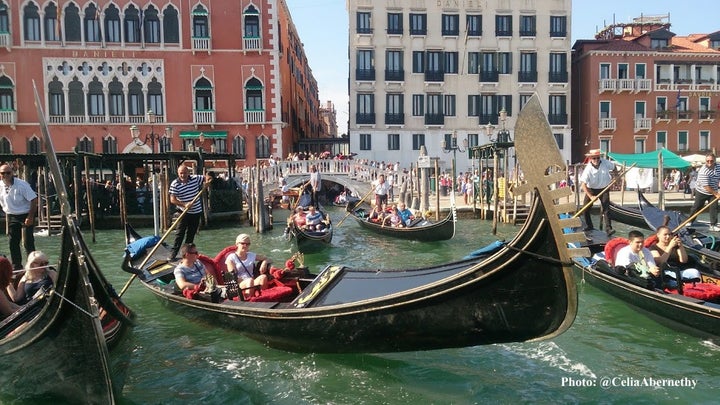
At 7am, Piazza San Marco, Venice is quiet and serene. The sun shines down on café employees setting out tables and chairs, city workers sweeping the sidewalks and business people with briefcases crossing the square on their way to their offices.
Three hours later, the square is crowded with thousands of people. It’s not crowded because of a festival, concert or special event; this is a typical summer afternoon in Venice.
Venice is not the only Italian city struggling with mass tourism. Last week, Florence, Naples, Rome, Venice and Milan announced their agreement to call into action a protocol for the management of tourist flow. The aim is to create a sustainable balance for both tourists and residents as well as to protect its treasures. Italy preserves 51 UNESCO World Heritage sites.
For travelers, this means having to plan, book beforehand, and be aware that some locations and landmarks have capped limits.
Why does Italy need to manage tourist flow?
The trails in Cinque Terre are trodden. The mosaic marble pavement in the Milan Duomo is not worn out by worshipers, but by tourists. The charming lanes of Capri are congested with people. Residents in cities like Venice and Florence are almost at breaking point.
According to the Culture and Tourism Ministry (MiBACT), Jan-Jul 2017 showed a 6.8% increase of air passengers alone: 99.6 million travelers, which does not include travelers arriving by train, cruise ship or other means of transportation. Record numbers are expected to climax by the end of the year.
How will Italy regulate tourism flow?
It’s more common today to have to purchase tickets to enter churches, or make a reservation to see an exhibit. To visit Leonardo da Vinici’s Last Super in Milan, you must book up to four weeks in advance and visitation has been restricted to groups of 25 admitted every 15 minutes. Local authorities are also implementing visitor limits. The Cinque Terre has put a cap on visitors; 1.5 million visitors per year. Ideas such as electronic systems that count and redirect people have also been discussed.
The European Commission guidelines set standards and responsibilities for sustainable tourism of EU states, and has created the EDEN project. EDEN promotes emerging European destinations and offers support to ensure social, cultural and environmental sustainability.
New ad campaigns are enticing travelers towards smaller cities and villages. Ecotourism and active tours like cycling and camping are being encouraged in order to persuade tourist towards new locations.
Tourist to Italy now have more information and choices. A visit to Milan, should include a visit to the smaller towns on Lake Como or the Valtellina Valley. On the Ligurian coast near Portofino, the village of Framura and the towns along the Levante Bay should be added to the itinerary. The treasures and flavors of Bologna should be experienced. There are innumerable choices and alternatives that will make a visit to Italy unforgettable.
What is essential is that an effort be made by both public and private participants to create an environment that benefits both its citizens as well as the visitor.
ABOUT THE AUTHOR
Celia lives on Lake Como, Italy. She shares her discoveries of her travels and experiences in Italy, giving readers an insider’s view of what to do, where to go and how to do it in style.
